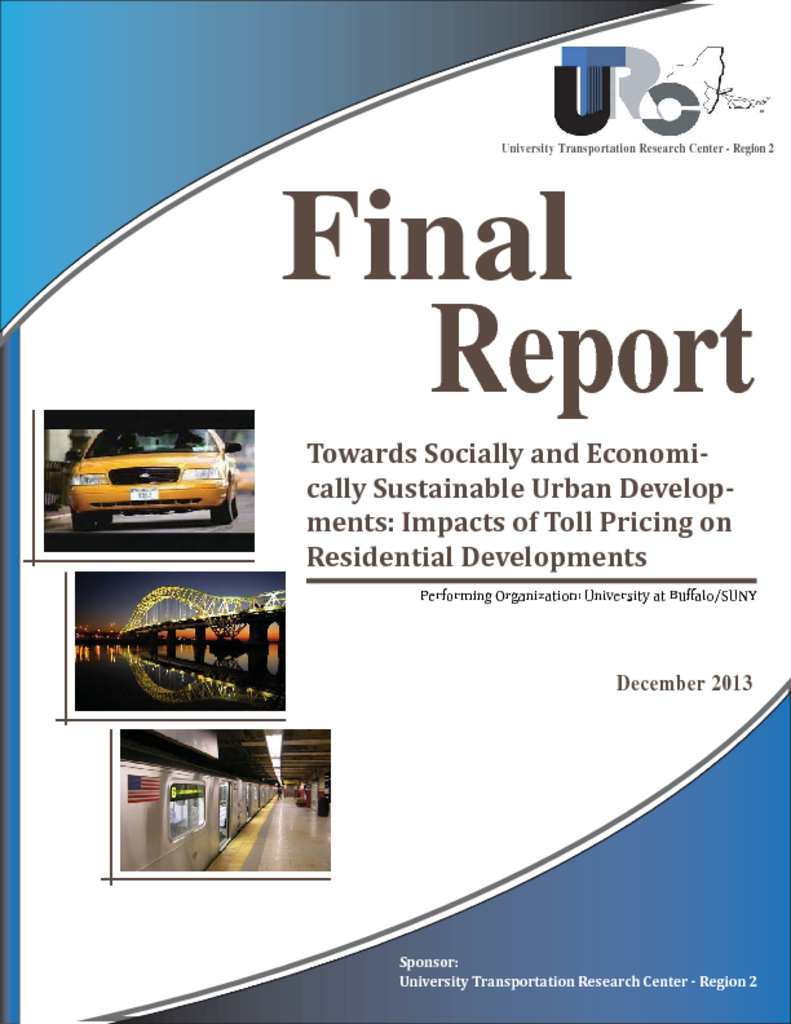The goal of this research is to investigate the effects of road pricing on residential land use choices and to help select pricing policies that foster socially and economically sustainable residential development in urbanized residential areas. Under this goal, a residential land use choice model in logit form with shared aggregated data was developed. The model was designed to assess the impacts of various toll pricing policies and the resulting accessibility on a residential land use choice pattern. We selected the Great Buffalo-Niagara metropolitan area for a case study. The multinomial logit model was built at the census tract level, with four residential land use types—single-family houses, multiple-family houses, apartments and others—as main choice alternatives. With the estimated model, the following hypothetical toll pricing scenarios were tested are: (I) uniform increase of tolls for the entire region, (II) distance-based tolls for the entire region, and (III) uniform tolls for entering the downtown area only. We found that toll pricing strategies affect accessibility of zones, shaping a trend and pattern of the residential land use. More specifically, increased toll charges would urge people to choose multi-family house and apartments, encouraging a sustainable high density residential land use pattern.




